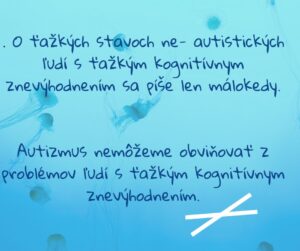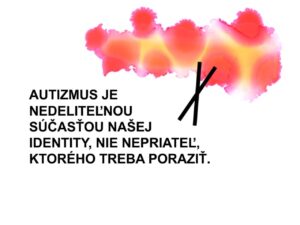According to findings published in the New York Post on the 17th of July 2022 , a study in 2020 found that the rate of children with Autism had increased from 1 in 50 to 1 in 30. The percentage of diagnoses had therefore increased from an evaluated 2,29 percent to 3,49 percent.
I agree with the excellent notion of the profile Thinking Persons Guide to Autism, which we follow on Facebook: There's no point in treating these findings as a scary campfire story.
We have always assumed the percentage of autistics in the general population to be significantly larger than official statistics might imply. This isn't caused by some alarming, epidemic increase in the prevalence of Autism. It is rather likely, in fact, that the rate of distribution is higher still, as there is still an issue of underdiagnosing autistic women and girls, who are more likely to show adaptive behaviors. Furthermore, these figures are typically gathered from the observation of parents, which also may not be the ideal source of information.
Neurodiversity is not a boogeyman
In the slovakian community around autism we often see these huge captions pop up, with the goal of solving the situation and finding financial resources to help these children. These are often marketing ploys, suggesting and presenting specific therapies, dietary supplements or similar "tried and true procedures" for "the curing" and improving the situation around Autism. Of course, in combination with various cognitive difficulties, the prospects of some children with autism are set in a way we may not be happy with. Autism itself shouldn't be pathologised as a result, however, as cognitive difficulties and disabilities also appear in non-autistic, or rather neurotypical people. We could, therefore, argue that neurotypical functioning is likewise pathological, and in need of curing. We cannot blame Autism for creating issues in cognitively disabled people. We rarely see articles about the difficulties faced by non-autistic people with cognitive difficulties. For this reason, the conversation is skewed in the direction of emphasising the issues of cognitively disabled autistics.

According to the Gaussian curve of normal distribution, around 60 percent of people is neurotypical, and roughly 40 percent on either end would be categorized as neurodivergent (be they cognitively enhanced or impaired). Neurodiversity isn't a boogeyman, it is a natural variance in perceiving and processing information. As Steve Silberman said, when a person with autism and social difficulties is in their garage or room, creating some incredible invention, their social impairments cease to exist. If given an appropriate sensory and social space, they can function without difficulty.
![]()
Why do we have such a hard time with neurodiversity?
We can ponder why we currently have such a hard time with neurodiversity, and why we're spooking the general public with it. We can find the reason why in how our society is set-up, clearly preferring a certain type of behavior, of reacting and of processing information, and especially of a certain type of productivity. We are expected to be reliably productive on the long-term, often in ways that would please an assembly line production, or some ever-growing efficiency curve in an industrial society. It is our culture, the effects of which we are often not fully aware of, but have accepted as "the norm." Telling us when the child should be sitting, standing, speaking. How they should learn to read and write and what academic accomplishments they should have attained by a certain age. What behavior is expected of them. Anyone who doesn't fit into this narrow box is marked a problem child. Should we find ourselves in a different culture, however, even just that of a specific family or school, these "problems" disappear, and a diagnosis is no longer necessary. The problem is not in the person, but their environment, their social circle, their society - in culture, in the broadest sense of the word.

Neurodiversity meanwhile, proves that the evolution of the brain has not yet stopped. In the last 100 years we, as a species, have been exposed to an unprecedented amount of stimuli, technological progress and information. If we realize that merely 100 years ago we had no electricity, we may understand that our brains are doing all they can to deal with and adapt to the growing demands of human progress. If they react with an increased sensitivity to sensory, social and internal stimuli, as is typical in the neurodivergent populace, including people with ADHD, or with differences in feeling or learning, then we suddenly see people in contrast with our expectations, who experience more anxiety, but also have greater abilities of introspection and self-motivation. It is up to us, whether we will measure them with the norms of what our society was used to a century ago, or if we manage to free ourselves of these boxes, and begin thinking outside of these limiting notions of "normalcy."
![]()
Neurodivergent teaching is efficient teaching
Neurodiversity reminds us that there are various ways to process information, various ways in which the human brain can develop and attain common skills such as reading or writing, but also various ways to teach information moving forwards.
Existujú v zásade dva prístupy: jeden je postavený na ponechaní dieťaťa aby si hľadalo svoju vlastnú cestu k poznávaniu. To v súčasnosti pri množstve podnetov a informácií ktoré deti dokážu nasávať je prvá z možných ciest získavania poznatkov rozvíjania sa cez seba riadené vzdelávanie a vnútornú motiváciu a záujmy.
The second approach, which appears very effective, is built on clear and specific instructions and leads for a seemingly specific type of children (I believe that not all,) to acheiving of academic goals. It is up to us, if we will set academic knowledge of a specific type as our main goal, which the founder of the SCIO school Ondrej Štefl had also abandoned, or if we will set a goal of developing our own path, and nurturing the stregnths of individual children. Of interest might be an observation from praxis, which had occurred to me whilst reading the aforementioned article, that children with asperger's syndrome and autism need these two approaches to be successful. They simultaneously need clear and precise instructions, which current learning systems unfortunately do not provide enough of, but also free learning without the checking of academic skills via classical methods. Neurodiversity as variance relates to children of all adults, because it is an umbrella term for diversity of thought as a whole. Therefore any child, be they neurodivergent or neurotypical, can profit from these two approaches in learning and development. I would once again remind you, that not even instructive learning is fully realised in our current school system.
![]()
One in thirty children is a good thing!
And for that reason, contrary to the usual view of the jump from one in fifty children, to one in thirty, am I very excited for this new development. It can bring us a gentler approach to the majority of children. As I've been saying for years in my educational and enlightenment activities, aspergers and autistic children need the same as all children. They need acceptance, a fitting approach, plenty of attention from their surroundings and respectful communication. A truly partner-like approach. The only difference is just that neurodivergent children cannot function without it, and are labelled as problem children, whereas regular children can manage such deficiencies for a longer period of time. The impact with regular children is only seen in their later years, whereas with neurodivergent children, the impact is almost immediate.
I am excited for this development, because more people, and I believe more women and girls, will be given better opportunitiees for working with their gifts, to better develop and utilise their strength without having to exhaustively mask or pretend that they are not experiencing that, which rattles them from the inside. Even high-functioning autistics and aspergers could, in the end, be people who simply use their productivity to mask their anxiety. In such a case, it is the productivity itself, which takes the role of stimming. Then they are often left without the energy to form relationships and personal interests, and we are all robbed of the magical moments, wherein a neurodivergent people's charm can show. Where they can show their creativity, and that which makes them truly unique.
team #beznávodu, Viera Hincová, translated by Riley Crawford

